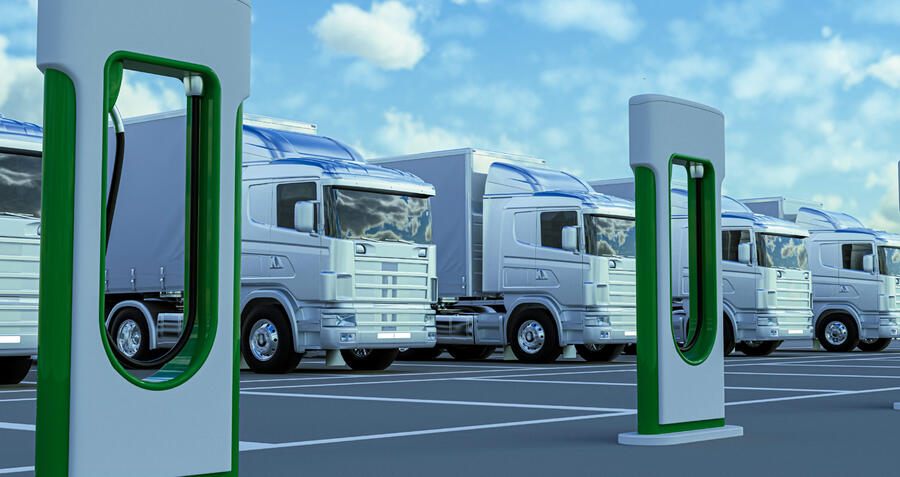The environmental and economic benefits of electric vehicles (EVs) are well known, but there’s a long way to go before EVs become the norm on our roads.
In the meantime, Australia’s heavy vehicle industry is working hard to overcome barriers to EV adaption as it looks at transitioning its fleet to EVs.
What are the barriers?
Cost, range anxiety (the number of kilometres a vehicle can run on a single charge) and supply are all contributing to the barriers.
At the moment, only a handful of heavy electric vehicle brands are available in Australia.
Currently, the available vehicles’ average range of kms on a single charge is around 300 km, and the wait times for an electric vehicle are between 18 and 24 months.
And the cost of buying an electric truck, depending on the model and size, can be 2 to 3 times higher than that of a traditional internal combustion engine (ICE) vehicle.
But all of this will change for the better as we move towards a greener and more sustainable transport of the future.
Let’s take a deeper look at the key challenges faced by the heavy vehicles industry in its transition to zero-emission vehicles and the steps being taken to overcome them.
EV ownership is expensive…
The initial cost of purchasing an electric truck (eTruck) is significantly higher than that of a traditional internal combustion engine (ICE) vehicle, with a price difference of around $100,000 - $300,000. And the need for charging infrastructure and specialised maintenance and repairs may seem more expensive than initially bargained for.
However, research suggests that electric trucks are more cost-effective in the long term, despite their initial high costs.
A McKinsey research report based on the American, European and Chinese markets1, found that when comparing a commercial eTruck to a similar-sized diesel truck – covering the same number of kilometres daily – the break-even point based on the total cost of ownership of the eTruck was achieved anywhere between 2-8 years. (Bearing in mind that the price difference between diesel and electricity in these countries impacts the numbers.)
… but zero-emissions fleets are the future
As more companies, governments, NGOs and schools commit to scope 1, 2 and 3 emissions targets, they’ll require their transport companies to electrify, greenify and decarbonise. Owning a zero-emissions fleet provides business security and has the added benefits of allowing EVs to access areas and regions usually closed to noisy, polluting ICE vehicles.
Government-backed financial incentives, tax breaks and grants to make it easier
Recent initiatives show government commitment within this space. These include ARENA’s $20 million grant to Australian freight giant Team Global Express for 36 new medium and 24 light rigid battery electric trucks for its fleet in 2023. Plus, the federal government has committed to spending $20.5 million to discount loans used to purchase electric vehicles through the Clean Energy Finance Corporation and Taurus Motor Finance agreement.
Federal and state governments and many private companies in Australia are also rapidly investing in building the charging infrastructure required to keep these vehicles moving. This will not only reduce the costs of owning and operating an EV, but also reduce some of the transition-associated anxiety many heavy vehicles fleet owners and operator are experiencing.
Overcoming range anxiety
Heavy vehicles are primarily used for medium and long-haul transport. Unlike ICE vehicles, which can travel long distances on a single tank of fuel, EVs require charging points to facilitate recharges every few hundred kms.
The average range of kms provided by the current set of heavy electric vehicles available in Australia is around 300 km on a single charge. But the increased interest in EVs and the government’s push for net zero-emissions future for transport is turning Australia into an attractive market for electric vehicle manufacturers.
In the coming months and years, many vehicle brands are launching their eTrucks in Australia, promising a range of 400-600 kms – no different to buses – on a single charge, giving more confidence to long-haul operators when considering the switch to EVs.
Building the necessary infrastructure
Lack of charging infrastructure is another big concern for the heavy vehicle industry in Australia. There are currently very few EV fast charging stations available for heavy vehicle operators, which makes it difficult for them to plan their trips, especially when on a long haul. Although depots may be equipped for recharges, the need for charging stations en route and in between destinations, is crucial to ensure the shift to EVs.
This is why organisations looking to invest in EVs are also looking at developing EV charging infrastructure at their depots and en route to their usual destinations to ensure they can effectively and efficiently benefit from the transition.
To encourage an easy transition to EVs, Australian governments are also working on planning, developing, and implementing fast-charging infrastructure along significant transport corridors. This will reduce the downtime required for recharging, increase the overall range of EVs, and help alleviate range anxiety. Additionally, some companies are also testing the feasibility of mobile charging units and battery swap stations, looking to provide solutions that will cater to the different travel requirements of eTruck drivers.
Managing grid impact and the increased demand for electricity
As of 2022, the Australian truck fleet comprises 500,000 rigid and 100,000 articulated trucks2.
According to the Electric Vehicle Council3, the government’s goal is to transition to clean energy, with 30% of the national fleet comprising electric trucks by 2030 and 100% by 2040.
This transition to EVs in the heavy vehicle industry will significantly impact the grid, increasing the demand for electricity and could put it under strain during peak usage times. Ensuring there is energy generation for EVs is critical.
This is why EnergyAustralia is actively participating in EV charging infrastructure development initiatives to ensure the grid is equipped to meet the increased demand for electricity and can provide energy certainty.
Renewable energy resources such as solar and wind power should be incorporated into the design of such infrastructure to ensure energy can be generated locally to power the chargers. Investment in energy storage systems, such as batteries, to store excess energy generated during off-peak hours locally has to be part of the solution to ensure a sustainable and reliable energy supply for the EV industry.
Putting the right solutions in place
While the heavy vehicle industry in Australia is facing significant challenges in transitioning to EVs, with the right solutions in place, the industry can move towards a more sustainable future.




